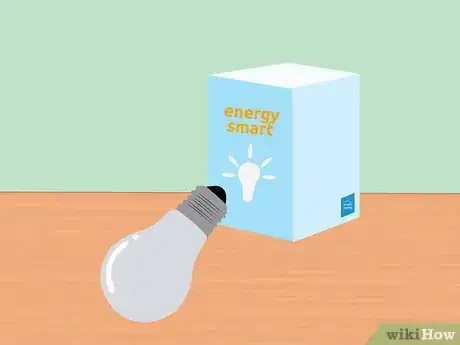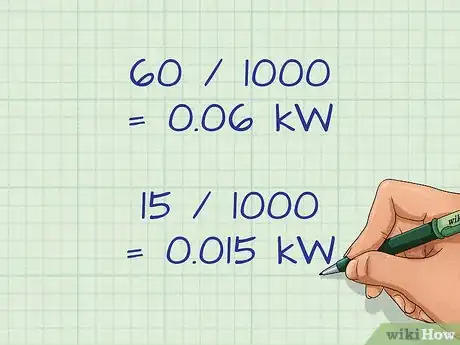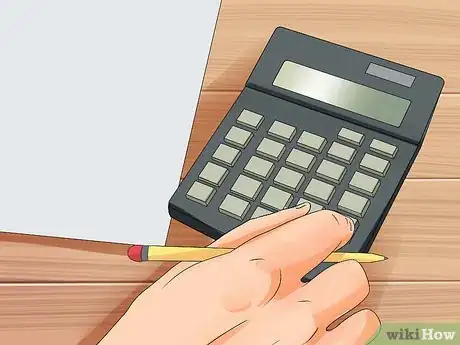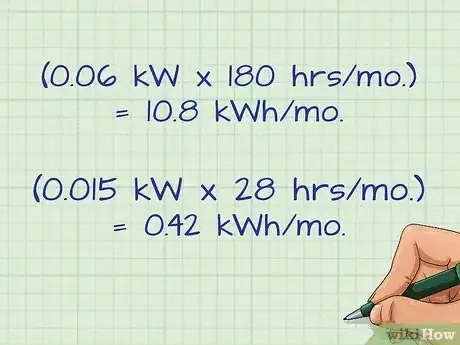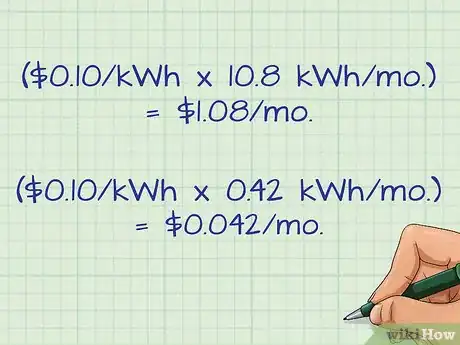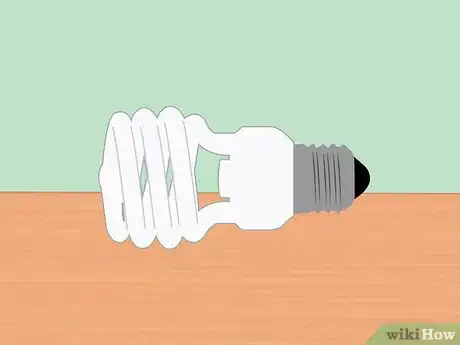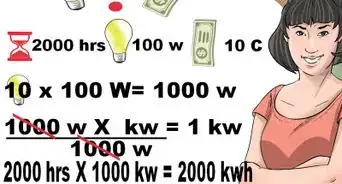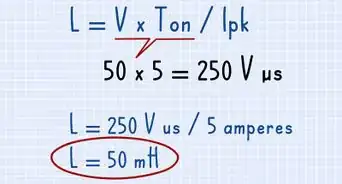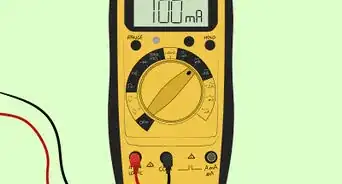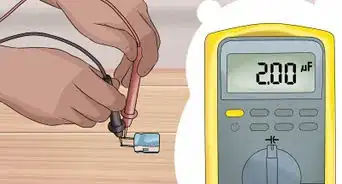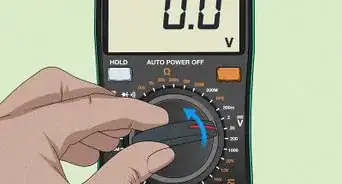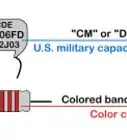This article was co-authored by wikiHow Staff. Our trained team of editors and researchers validate articles for accuracy and comprehensiveness. wikiHow's Content Management Team carefully monitors the work from our editorial staff to ensure that each article is backed by trusted research and meets our high quality standards.
There are 7 references cited in this article, which can be found at the bottom of the page.
wikiHow marks an article as reader-approved once it receives enough positive feedback. In this case, 80% of readers who voted found the article helpful, earning it our reader-approved status.
This article has been viewed 471,699 times.
Learn more...
Ever wonder how much that light bulb is costing you? Is it really worth switching to LED bulbs? All you need to find out is the bulb's wattage and the cost of electricity in your building. Replacing your incandescent bulbs with energy-efficient options typically saves a few dollars in the first year, and more over a longer period of time.
Steps
Kilowatts and Kilowatt-Hours
-
1Find the wattage rating of the bulb. The wattage is often printed directly on the bulb as a number followed by a W. If you don't see it there, check the packaging the bulb was sold in. The watt is a unit of power, measuring the energy the bulb uses each second.
- Ignore phrases like "100-watt equivalent," which are used to compare brightness. You want the actual number of watts the bulb uses.
-
2Divide this number by one thousand. This converts the number from watts to kilowatts. An easy way to divide by one thousand is to move the decimal point three places to the left.
- Example 1: A typical incandescent bulb draws 60 watts of power, or 60 / 1000 = 0.06 kilowatts.
- Example 2: A typical fluorescent bulb uses 15 watts, or 15 / 1000 = 0.015 kW. This bulb only uses ¼ as much power as the bulb in example 1, since 15 / 60 = ¼.
Advertisement -
3Estimate the number hours the bulb is on per month. To calculate your utility bill, you'll need to know how much you use your bulb. Assuming you receive monthly utility bills, count up the number of hours the bulb is on in a typical month.
- Example 1: Your 0.06 kW bulb is turned on for 6 hours a day, every day. In a 30-day month, that's a total of (30 days/month * 6 hrs/day) = 180 hours per month.
- Example 2: Your 0.015 kW fluorescent bulb is on for 3.5 hours a day, 2 days a week. In one month, it will be on for roughly (3.5 hours/day * 2 days/wk * 4 wks/month) = 28 hours per month.
-
4Multiply the kilowatt use by the number of hours. Your energy company charges you for each "kilowatt-hour" (kWh), or each kilowatt of power in use for one hour. To find the kilowatt-hours your light bulb consumes per month, multiply the kilowatt use by the number of hours it's on each month.
- Example 1: The incandescent bulb uses 0.06 kW of power and is on for 180 hours a month. Its energy usage is (0.06 kW * 180 hours/month) = 10.8 kilowatt-hours per month.
- Example 2: The fluorescent bulb uses 0.015 kW and is on for 28 hours a month. Its energy usage is (0.015 kW * 28 hours/month) = 0.42 kilowatt-hours per month.
Calculating Cost
-
1Calculate the cost of running your light bulb. Check your utility bill for the cost of each kilowatt-hour of electricity. (Average costs are roughly $0.12 per kWh in the US, or €0.20 per kWh in Europe.[1] ) Multiply this by the number of kWh your bulb uses each month to estimate how much you pay to power that bulb.
- Example 1: Your power company charges 10 US cents per kWh, or $0.10. The incandescent bulb uses 10.8 kWh/month, so running it is costing you ($0.10/kWh * 10.8 kWh/mo.) = $1.08 per month.
- Example 2: At the same cost of $0.10 per month, the low-use fluorescent bulb costs you ($0.10/kWh * 0.42 kWh/mo.) = $0.042 per month, or about four cents.
-
2Save on lighting costs. Light bulbs account for about 5% of the electricity bill of the average US household.[2] Although other energy savers will have a larger effect, replacing incandescent bulbs is always worth it in the long term:[3] [4]
- Light-emitting diodes (LEDs) are even more efficient and have a lifespan of 50,000 hours (almost six years of constant use). Over their whole lifespan, they save about $7 US per year.[5]
-
3Choose the right replacement. Consider the following when shopping for energy-efficient lighting:[6]
- Poorly made CFL bulbs can burn out quickly. The best options have an EnergyStar logo in the US, or a rating of A+ or higher on the European Union energy label.
- If you're lucky, the packaging will list "lumens," a measure of brightness. If not, use this estimate: a 60 watt incandescent bulb, 15 watt CFL, or 10 watt LED are all roughly the same brightness.
- Look for a color descriptor. "Warm white" is closer to the yellow glow of an incandescent. "Cool white" heightens the contrast, which may feel harsh in living spaces.
- "Directional" LED lights focus light on a small area instead of illuminating a whole room.
Expert Q&A
-
QuestionHow many kWh does my house use in a day?Mantas SilvanaviciusMantas Silvanavicius is a Licensed Electrician and the Owner of M+S Electric based in Las Vegas, Nevada. With more than 20 years of experience, he specializes in home electrical installations, testing, and wiring. Mantas and his team have completed projects for companies such as Seiko and Springhill Suites by Marriott. M+S Electric is licensed, bonded, and insured.
Licensed ElectricianTake a reading of your electric meter and write down the numbers. The next day (at the same time), take another reading of your meter and record the numbers. Then, compare the difference increased between both days—that will give you an average of what your house used in the last 24 hours. -
QuestionHow much electrical energy is consumed by a 30 W bulb in 5 minutes?
 Community AnswerA one watt bulb consumes 1 joule of elecrical energy every second. To calculate the total amount of energy consumed in your example, multiply (1 joule/second) x (30 watts) x (5 minutes) x (60 seconds/minute) = 9000 joules. Joules are a very small unit of energy, useful for problems like this one with a small unit of energy. Energy companies use a unit called the kilowatt-hour instead. 9000 joules = 0.0025 kilowatt hours.
Community AnswerA one watt bulb consumes 1 joule of elecrical energy every second. To calculate the total amount of energy consumed in your example, multiply (1 joule/second) x (30 watts) x (5 minutes) x (60 seconds/minute) = 9000 joules. Joules are a very small unit of energy, useful for problems like this one with a small unit of energy. Energy companies use a unit called the kilowatt-hour instead. 9000 joules = 0.0025 kilowatt hours. -
QuestionIf 100V is applied across a 200V, 100W bulb, what will be the amount of power consumed?
 Community AnswerThis formula is complicated for light bulbs, since the amount of heat produced changes the properties of the light bulb filament. From a practical standpoint, the bulb will be extremely dim. It's best to use a circuit as close to the bulb's rated voltage as possible. Using a higher voltage is even worse, since the bulb could overheat or explode.
Community AnswerThis formula is complicated for light bulbs, since the amount of heat produced changes the properties of the light bulb filament. From a practical standpoint, the bulb will be extremely dim. It's best to use a circuit as close to the bulb's rated voltage as possible. Using a higher voltage is even worse, since the bulb could overheat or explode.
Warnings
- Check your light fixture label before switching to a higher wattage light bulb. Each fixture has a maximum wattage. Using a light bulb that draws more than the maximum wattage can lead to short circuits and other damage.⧼thumbs_response⧽
- A light bulb made for a higher voltage than your socket will use less wattage than stated on the label. This will slightly reduce the kilowatt-hours used, but the light output will be dimmer and yellower.[8] For example, a 60 watt, 130V bulb powered by a typical U.S. 120V household circuit will draw fewer than 60 watts, and produce dimmer, yellower light than a bulb labeled 60W and 120V.⧼thumbs_response⧽
References
- ↑ http://www.eia.gov/todayinenergy/detail.cfm?id=18851
- ↑ http://www.energy.gov/energysaver/lighting-choices-save-you-money
- ↑ http://www.energy.gov/energysaver/lighting-choices-save-you-money
- ↑ http://energyusecalculator.com/electricity_cfllightbulb.htm
- ↑ https://www.inlineelectric.com/lifespan
- ↑ https://energy.ec.europa.eu/system/files/2017-03/fin_2_consumer_guide_-_lighting_en_0.pdf
- ↑ https://www.energy.gov/energysaver/when-turn-your-lights
- ↑ https://www.electricalexperts.com/blog/2017/march/electrician-explains-what-happens-when-using-wro/
About This Article
To calculate kilowatts used by a light bulb, start by locating the wattage rating on the bulb, which is the number followed by a "W." Then, divide that number by 1,000 to convert it from watts to kilowatts. Next, estimate the number of hours the bulb is turned on each month. Finally, multiply the number of kilowatts by the number of hours to determine how many kilowatts your light bulb uses in a month. For tips on how to calculate the cost of your light bulb's kilowatt usage, scroll down!
